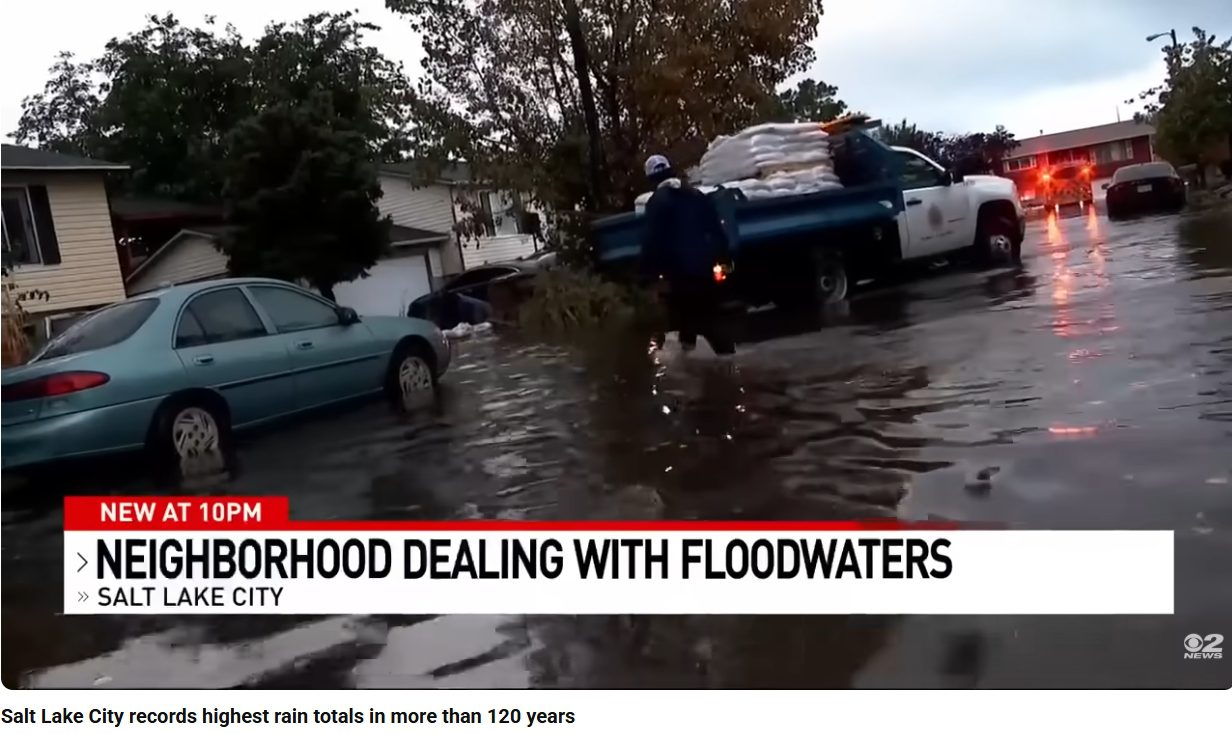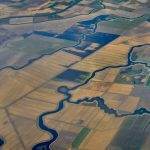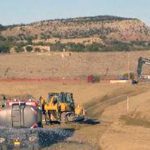- Salt Lake City recorded its second-wettest day since recordkeeping began in 1874.
- Over 2.6 inches of rain caused flooding, sewer overflows, and infrastructure strain.
- The same week, Utah lawmakers approved H.B. 1001, updating Great Salt Lake management laws.
- The bill clarifies berm operations and requires stronger coordination between agencies.
- Environmental officials say both events highlight the urgency of lake stabilization efforts.
Tuesday, October 7, 2025 — On October 4, 2025, Salt Lake City experienced a deluge that nearly broke a 124-year record. Local weather stations measured 2.47 inches of rain within a single day and 2.61 inches over the course of the storm. The only wetter day ever recorded occurred on May 3, 1901, when 2.64 inches fell.
The downpour flooded several neighborhoods, submerged roadways across the Salt Lake Valley, and extended into parts of Tooele County. Public works crews worked through the weekend to clear debris and divert water from overwhelmed storm drains. The city’s aging sewer infrastructure struggled to manage the sheer volume of runoff, resulting in overflows and property damage in multiple districts.
Officials urged residents to avoid standing water and report any damage. Cleanup operations continued into the following week as temperatures dropped and skies cleared. Meteorologists noted that the intense storm followed months of weather variability across Utah—an illustration, they said, of how the region is facing both flood and drought extremes within the same year. Local reporting video:
Utah Legislature Passes Great Salt Lake Bill.
Just two days later, on October 6, 2025, Utah lawmakers passed H.B. 1001, Great Salt Lake Amendments , in a unanimous bipartisan vote—73-0 in the House and 27-0 in the Senate.
, in a unanimous bipartisan vote—73-0 in the House and 27-0 in the Senate.
The new legislation updates the state’s management of the Great Salt Lake and surrounding wetlands, building on existing policies that treat the lake as a public trust resource. It clarifies how the Division of Forestry, Fire and State Lands must balance ecological, recreational, and mineral-extraction interests while maintaining water quality and wildlife habitat.
Among its key updates, H.B. 1001 formally integrates berm management into the Great Salt Lake’s long-term strategic plan. Berms—man-made barriers that influence salinity levels between Gilbert Bay and Gunnison Bay—are critical for sustaining brine shrimp populations and migratory bird habitats.
The bill authorizes the division to raise the adaptive management berm to an elevation of 4,192 feet when lake levels fall below 4,190 feet, but requires that it be lowered again within 18 months to maintain balance between the bays. Before any adjustment, the division must consult with the Great Salt Lake Commissioner and develop a specific schedule and environmental plan.
Additionally, the law directs the division to assess engineering and infrastructure needs for salinity management and to collaborate with the Division of Wildlife Resources on habitat restoration projects. It reaffirms that no existing water rights are altered and that the state engineer’s authority over water allocation remains intact.
A Week of Extremes.
The timing of the storm and the legislation drew public attention to Utah’s shifting climate and the precarious state of the Great Salt Lake. Scientists have repeatedly warned that the lake’s shrinking surface threatens ecosystems, public health, and local economies. Meanwhile, the October 4 storm underscored that even in drought-prone regions, sudden and extreme rainfall can overwhelm systems built for a different era.
While H.B. 1001 will not take effect until December 6, 2025, its passage marks a notable step in codifying how the state manages the physical infrastructure that influences lake salinity and volume. The legislation reinforces the idea that Utah’s approach must now account for both scarcity and excess—ensuring the lake remains viable despite a changing climate.
Image: Screenshot from video embedded above, KUTV 2 News Salt Lake City
FAQ
What made the October 4 storm historic?
It was the second-wettest day ever recorded in Salt Lake City since 1874, with 2.47 inches of rainfall in one day. The record of 2.64 inches was set in 1901.
What damages were reported?
Flooding damaged homes, closed roads, and caused sewer overflows. Cleanup efforts continued for several days after the storm.
What is H.B. 1001 about?
The bill updates how Utah manages the Great Salt Lake, with new provisions for berm operation, habitat protection, and coordination between state agencies.
When does H.B. 1001 take effect?
The law takes effect on December 6, 2025, or earlier if signed and approved under Utah’s constitutional timeline.
Does the new law change existing water rights?
No. The legislation explicitly states that it does not override or modify any existing water rights or the authority of the state engineer.





